Hosted By:

INDIA Class
Speedfest
is an exciting, high-speed aircraft design competition which is
intended to foster enthusiasm for aviation, and unmanned aircraft
design. There are two flight classes: Alpha Class is the Advanced class which
is for collegiate-level teams. India Class is the Invitational class.
It is open to 5th through 12th grade teams on an invitational
basis.
Contents:
Mission
Requirements and Design Constraints
Flight Procedures and Scoring
Safety Requirements
General Aircraft Requirements
Contest Day Information
Eligibility
Entry Request
Deadlines
Contest Site
Mission Requirements
- Complete
as many laps as possible in 2 minutes on a 330
ft. course with an electric-powered airplane
Airplane Kits Provided
Teams
will be provided with the following airplane kit:
Speed Deamon | J&H Aerospace (jhaerospace.com)
Airplane Build Tutorial Video
Additionally teams will be provided with:
- Teams
will need to purchase a 4-Channel (or more) transmitter and receiver.
(Teachers who participate in the Speedfest Takeoff event will be
eligible to receive a Futaba Transmitter grant for their school)
Design Constraints
- Teams may make any airframe
redesign, modifications, and substitutions to improve performance,
subject to restrictions as follows:
- Aircraft must use only electric propulsion. If a
substitute or backup motor to the one provided must be used, the Kv may
be no higher than the provided motor.
- Any LiPo battery of 2 cells (2S) is acceptable as long as capacity is no more than 850 mah
- Propeller must be 2-bladed, and may be no more than 6 inches in diameter
- All skin surfaces of modified class must be water-resistant foam board (such as "maker board") with the exception of control surfaces. Control surfaces may be a more rigid material such as wood, or composite. Tape, paint, mylar or other thin coverings
may be used over the foam skins if desired.
- Longitudinal Center of Gravity (CG) must be no farther aft of the
leading edge of the root of the wing, than 1/4 of the wing
chord there. (See build video)
Flight
Procedures and Scoring
- Aircraft
will be flown in 3 to 5 rounds that consist of multi-plane heats. All teams will have the same number of heats
for the day. But if they are not ready to fly, or they drop
out due to a malfunction or crash, it will affect score.
- Planes
will be launched from a line abreast configuration. A sample 3-plane heat is shown below.
- Aircraft handlers and pilots are to arm their aircraft after they reach their starting location.
- Airplanes will be hand-launched using an overhand toss.The Starter
will call
"ready" at which time the pilots may apply full throttle.
- Timer starts when the Starters flag drops. If a team launches early, that team will DQ for that round.
- Laps are performed in left-handed ovals as indicated in the
figure below. Planes do not need to fly around a flag, they
just must pass a turn line in space. If
wind conditions force takeoff to the north the first turn will be to the right.
- Pilots must fly the pattern beyond the fence line which is
approximately 120 feet away from where they will be standing.
Repeated breaking of the fence line will result in a DQ.
- Each
team will provide two flight crew members to serve as turn
indicators, and will stand next to the Cut Judges. When a
plane crosses the turn line, they will signal their caller by
raising
a flag. Crew flaggers must not raise a flag prior to the
airplane
crossing the turn line, or it will be considered a "cut" resulting in a
DQ. This is the most common reason for a DQ.
- Cut Judges will use
a
sighting guide to
determine when a plane has passed a turn line, and if a flag has been
raised early, or if a plane has "cut" the turn. If a cut
occurs,
the judge will identify the number of the offending team, and
indicate a disqualification (DQ) for that
flight attempt by raising a flag. If a plane is DQ'ed, the
pilot should land as
soon as possible. A DQ results in no points being awarded for
that heat, which will affect a team's overall score.
- Teams
must bring their own "flags." The "flags" must be a board
such as plascore or foam posterboard with the team number on both
sides. The numbers must be as large as practical, but at least 20
inches tall. The
numbers as well as at least the boundary of the flag, must be in the
high visibility color assigned to the team (see below).
Flaggers will hold the signs with
both hands
and promptly raise the sign over their head as their plane crosses the
line. It is important that the signs are as legible as
possible
from 300 ft. away. The signs will be used by the caller to
call
turns, as well as by the judges to award a point.
Score:
Scoring is
based on distance traveled (flags) within two minutes,
on a course with 2 turn markers spaced 330ft. apart. One
point is
awarded for each turn line reached (including the first).
Awards:
The
Speedfest organizers will present 9 India Class awards. Criteria shown in parentheses:
- Speedfest Flag awards: Based on the best TOTAL sum of flag scores for all heats during the contest. (Note
this is a change. Reliability, being ready to fly, preparation
and teamwork are important to scoring as is airplane speed)
- 1st
Place
- 2nd
Place
- 3rd
Place
- Top New Speedfest Team (Highest TOTAL flag score for school that has not competed before)
- India
Class Promotional Video Award
(A
video is required of all India Class teams. Follow link for
details.)
- Best Airplane Build (Quality of overall build,
attention to detail, innovative design features)
- Best Airplane Graphics (Design and quality of
covering and / or paint scheme)
- Best Helmet (Helmet graphics)
- Team Spirit (Judged on sportsmanship, spirit,
integrity)
There will
also be a Speedfest Educator of the Year award presented by the NASA
Oklahoma Space Grant Consortium. The award will consist of $300
of STEM aerospace-related supplies, and a polo shirt.
Tiebreakers:
- In
case of a tie for Speedfest Flag award, the higher Promotional Video Score will decide placement.
Safety Requirements
Safety
must be the number one priority of all contest participants. The
Speedfest organizers have gone to great lengths to keep the event safe
for participants and spectators. Please carefully note the
following:
Safety notice:
Electric-powered aircraft have different safety concerns than
the IC engined airplanes used in past Speedfest competitions.
Competitors should take great care in handling or working with the
airplanes since it is possible for the motor to spin up to full speed
instantly when a battery is connected. This can be due to an
electronic speed controller (ESC) malfunction, or improper attention to
detail when connecting the battery or transmitter. Always keep
face, hands, fingers, and tools clear of, and behind the propeller
whenever a battery is connected. At Speedfest, all aircraft
handlers are required to wear safety cut-resistant gloves (see below)
and eye protection when handling aircraft. Teams are also
encouraged to do this also when they are working on their airplanes at
home.
- Contestants are expected to conduct themselves, and operate
their aircraft in accordance to the AMA Safety Code. (the following
link contains all AMA documents including the Safety Code: http://www.modelaircraft.org/documents.aspx)
- Every
person beyond the spectator line (including officials), must
wear a helmet approved by OSHA, DOT, ANSI, SNELL,NOCSAE or other
recognized organization that certifies safety equipment.
There is
a very wide variety of helmets that meet these criteria including;
skateboarding helmets, bicycle helmets,
construction hard-hats,
etc.
- Any flight
crew member involved with starting the aircraft motor at any time
(flightline or
pits), or holding the airplane, must wear safety glasses and level-5 cut-resistant gloves
example).
- Teams
must make sure that people are standing clear of the plane of the
propeller in case of a blade failure. The safest
location is
behind the propeller. All individuals must be behind the
plane of
the propeller when running up the motor.
- Flight
Crew: Required minimum flight crew is 4 members
(Pilot, Caller, and 2 Flagmen). Flight crew must verify current
AMA
membership at the event. Youth membership in AMA is $15. Also
consider the Three Month Trial membership. Just make sure
the Speedfest contest is within the trial period.
- Caller:
Stands by the pilot to call turns.
- Crew Flagmen: (2). Stand near turn marker judges to indicate turn line
passage
- When a team
is called for a flight, only flight crew may enter the field
beyond the spectator area.
- All aircraft
to be flown must go through an airworthiness inspection outlined below.
- Teams must conduct test flights only
at an AMA-sanctioned airfield. There are sanctioned clubs
throughout the state. The AMA mentor can assist with
access
to a sanctioned flying site. Additionally, teams may go to
the AMA club locator site to find one.
- Aircraft must have proof of flight, and an airworthiness inspection (discussed below).
- All team
members must be committed to the AMA safety code
when designing, building, and flying, unmanned aircraft.
- Motors must not be started in the teams pit area. There will
be designated areas for runup and testing.
- Teams must either attend the Pre-Speedfest Event on Saturday,
March 29th, 2025 (back-up inclement weather date of Sunday, March 30th)
or Saturday, April 6th, 2025 (back-up inclement weather date of Sunday,
April 7th) OR provide Proof of Flight by 12Noon on Friday, April 12th,
2025 (see exact instructions/information at this link). Please
note that the Pre-Speedfest Event dates will be filled on a
first-come, first-serve basis with a max of 24 teams at each event.
Once the team attends the Pre-Speedfest Event/turns in Proof of Flight
Video, the plane is grounded which means no flights nor modifications
can occur until Friday at the Speedfest Weekend event.
Pilots
- Speedfest is
not an event
appropriate for novice pilots. Teams should use
experienced
pilots
with a record of safety.
- Contest organizers will provide a pilot at the competition upon request.
Teams may not request a specific pilot.
- Pilot instructions:
- Safety must the primary responsibility of every pilot.
- If
there is some aspect of the airplane that the pilot deems unsafe, he
must ensure the team takes corrective action before flight.
- Pilots
must follow the instructions of the safety officer during flight.
If
instructed to abort, or even sacrifice the airplane for safety, the
pilot must do so immediately without question.
- Pilots
must never allow the airplane to cross a line defined by the West edge
of the runway. If the line is crossed, power must be cut
immediately, and a turn made away from the spectators.
- Pilots
will be instructed how far to the east to fly patterns in order to
maintain safe distances from the spectators. India class uses
a
275 ft. setback from the spectator line.
General
Aircraft Requirements
Propeller
Only propellers
designed for electric-powered aircraft are allowed.
Radio
Gear:
Only
2.4 GHz spread
spectrum radios will be allowed. A standard radio range check
will be conducted at the Speedfest airfield prior to a technical
inspection pass.
Covering and Visibility:
High
visibility is important for the team flaggers as well as for the judges
to be able to award points. Inability for judges to identify planes in the air has been a cause for loss in points.
Each team will be assigned a
high-visibility "neon" color along with a team number. At least
the outer
6 inches of the wing tips (top and bottom), as well as the entire
vertical tail must be this color, and uninterrupted by any other
graphics or numbering. Spray paint or permanent Adhesive Vinyl sheets are good choices for this although paint will most likely be the lightest. The
remaining parts of the airplane are up to the discretion of the teams,
but teams must design schemes that make them
distinct from a distance . Some examples are shown below.
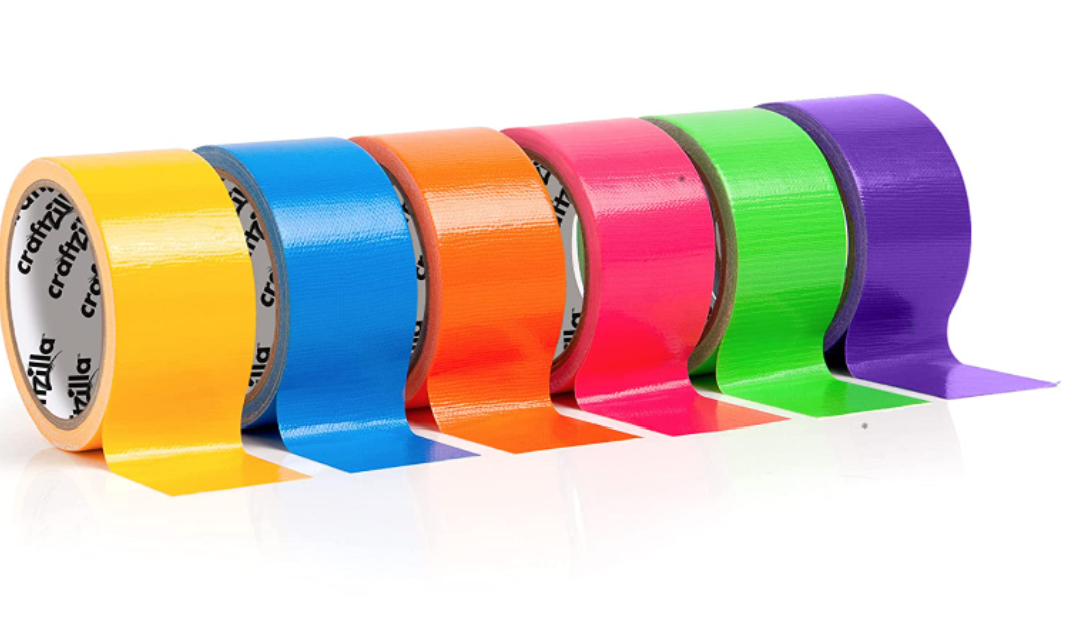
***Please note the above image is solely to help teams understand the
expected hue of their assigned color. Duct tape is relatively heavy and
is not the best choice for decorating your plane.**
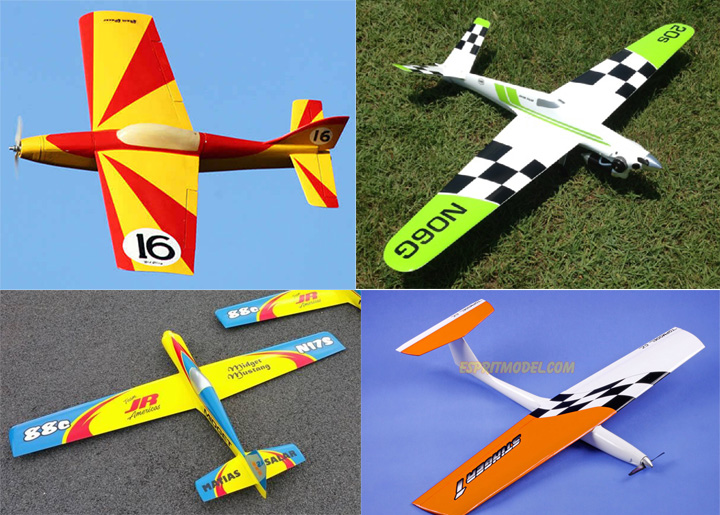
**The above four planes are of examples Pylon racers, but are not examples of the required numbering and coloring.***
Team
Numbering
Each
team will mark their airplane with their team number which will be
assigned by the Speedfest organizers. Each airplane must be
numbered on the port wing (left side as viewed from sitting in the
cockpit) top AND bottom of the wing. Numbers must be as large as
possible. The numbers must not be on the outer 6 inches of the
wing tips or on the vertical tail. The numbers are used in the
pit area and by judges as the teams enter the field in order to
identify teams.
Preflight
Airworthiness Inspection of Aircraft
Prior
to
competition, all aircraft shall undergo a safety inspection.
Safety inspections will be conducted on a first come, first
served basis. Teams are encouraged to go through safety inspections on
the Friday afternoon of Speedfest so as to not miss any flight
opportunities.
The overall quality of construction must be considered safe and
airworthy.
Safety inspectors will be checking the following:
- All flight batteries must have a female XT30 connector on the battery side:
- Propeller shaft must have a blunt spinner nut of some type even if not used to secure propeller
- Batteries must be securely held in
place. Tape is not acceptable.
- Aircraft
must have the ESC-to-battery connectors external to the aircraft
at all times, in order to safely arm and disarm the aircraft.
- Push/pull
rods or cables and control horns, shall be installed in
such a way that they will not become disconnected in flight.
- Control
surfaces shall be firm on the hinge line without excessive play.
- Servos shall
be mounted securely with little play.
- Any servo wire extensions used must have connections secured
with a servo lead lock (electrical tape or shrink wrap is permitted).
- All screws
holding the motor to the mount and the mount to the firewall shall be secure.
- Check that transmitter used has a fail-safe set to throttle cut-off, and can indicate voltage low condition.
- The aircraft
shall be structurally sound as well as free of structural
damage which may
compromise safety.
- Range check verification
- Team
Flags and safety gear will be checked
- Proof
of prior flight. Teams must demonstrate proof of prior
flight.
This may be done using pictures or video evidence. Proof of
flight must be demonstrated prior to noon on the Friday preceeding contest day, or the team
will not be allowed to compete.
Repairs:
Any
aircraft that has been damaged after a safety inspection or has a known
history of problems shall not be permitted to fly until it has been
satisfactorily repaired and re-inspected. Materials used for repair may
come from any source.
Confirmation of class
rules:
Judges will also confirm that all aircraft entered comply with the
Design Constraints. This will include inspection and
measurements of the airframe and motor for compliance.
Contest-Day
Information
- Teams are encouraged to have multiple
batteries. Electric power will be
provided for charging only, but teams must be also able to charge using DC power
(a car battery, or a portable 12v battery or power pack such as this. Generators
are not allowed) in case electrical power is interrupted or at full
capacity with other teams charging. The charger provided to the
India teams can be powered by USB-C or a battery.
- Each
team will be provided at least 3 flight attempt
opportunities weather permitting. Maximum number of flight attempts depends on
several factors, but our objective will be 3-5 rounds The
TOTAL flag
score of
all attempts will be
retained. Note that unlike previous contests, the highest number
of flags in a single heat is not rewarded. Teams that want
to score the highest flags for the day need to make sure they are ready
each and every round, to follow checklists, make sure they are
practiced in launching,flagging, etc. Total flag count
rewards teams that are consistent and prepared every round, and pilots
that fly safely and consistently.
- Speedfest
objectives and scoring have been designed to minimize the effect of
weather conditions. Expect competition to continue unless
winds
are
above 30 mph sustained with cross, or if there is continuous rain.
If all teams are not provided with 3 flight attempt
opportunities, the rain date may be used.
- Speedfest is
a competition between teams.
There are no restrictions on repairs,
spare parts, replacement aircraft, etc. Repaired and
replacement
planes must still
conform to the rules for a particular class. If an aircraft
is
damaged to an extent that airworthiness may be questioned, and is to be
re-flown, the airplane must go through the airworthiness inspection
again. Also, if a replacement plane is used, it
must also go through the airworthiness inspection.
- Teams
may request a Speedfest Pilot at the event, however, they may not
request a specific pilot. This is to make sure that heats may
be
scheduled efficiently, and without concern about which teams cannot fly
in the same heat. For teams that require a Speedfest pilot at
the
event, pilots will be assigned on a rotation.
- Mandatory
Items to bring:
- Current
AMA membership cards for flight crews
- Proof of flight
- Helmets, safety glasses, gloves, and flags, for
Flight Crew
listed above.
Registration
During
the designated time on the day of the event, flight crews must
register. Speedfest officials will then provide each with a
flight line pass. Registration consists of the following:
- Flight
crews must each show proof of current AMA membership
- Flight
Crews, advisors, and mentors should report with their airplane to have
a team photo taken.
Flight Sequence
- Teams will
be called based on the scheduled heats. Teams should be aware
of where they are in the heat schedule. Each flight round will consist of heats of 4-6 planes at a time.
- When
teams are
called,
they will need to go to the hangar, and have a battery AND transmitter voltage check. Failure of the voltage
check
will result in DQ for that round.
- Teams will then move to the queue boxes which will be labeled 1-4,
corresponding to the starting sequence on the runway.
- Only
teams that are called to the flight line may pass the spectator line
and enter the course. They must wear the appropriate safety
gear.
- When called to the flightline, teams must identify their
plane and
flags to the judges table so the flag counting judges can identify the
planes.
- A two minute countdown timer will begin when teams are
called to the flight line. Within that time, teams must get
to
their starting location on the runway, and arm their
airplane.
When time expires, the flightline judge will clear the runway of
starters and spotters. If a team’s
airplane is not running at that time, they must immediately leave the
runway with the airplane and all flight gear. When the runway
is clear, the flightline judge will
immediately start the heat. When time expires, teams have two
minutes to land and clear the runway.
- A team that has to leave the runway for
not being prepared to fly, may not fly again in the present round by
moving to a later heat. They will forfiet their flight
attempt for the present round, and may fly again in the next round.
Speedfest
Team
Promotional Video Award
All India class teams are required to create a Team
Promotional
Video. Videos can
promote: their team, airplane, school,
Speedfest, or any
combination of these in an entertaining and informative way.
The videos can be as simple as an introduction to the team
taken with a smart phone camera, to as complicated as a fully edited
promotional music video.
Guidelines:
- Videos may
be no more than 2 minutes in length total. .
- May
not refer to specific competitors teams in a negative light.
- May
not contain material considered to be obscene by professional standards.
- Royalty-free
music is preferred.
Teams should test their videos on YouTube well in
advance of the deadline, so that they are
not removed or muted due to copyrighted music.
- Videos not meeting all guidelines will not be eligible for
voting.
Teams
will send the YouTube link to their videos to SpeedfestAero email
address ( ) no later than 7pm CST Monday of Speedfest week,
and the winner will be
chosen by "Likes". There are no restrictions on who
may
vote. Votes will be accumulated from until
Speedfest contest day. The penalty
for a team not submitting the link to their video by the deadline, is
loss of their best heat score on contest day.
) no later than 7pm CST Monday of Speedfest week,
and the winner will be
chosen by "Likes". There are no restrictions on who
may
vote. Votes will be accumulated from until
Speedfest contest day. The penalty
for a team not submitting the link to their video by the deadline, is
loss of their best heat score on contest day.
Eligibility
- Teams
must be extended an invitation to register and compete in the India Class
portion of Speedfest.
- Teams
may be formed from formal (public/private schools) or informal (organizations
serving 5th-12th grade students, homeschool groups, etc.)
entities.
- Teams
must consist of a minimum of 4 students and a maximum of 7 students in addition
to a minimum of 1 educator and a maximum of 2 educators.
- Student
members must be in fifth through twelfth grades.
- All
new schools/organizations may only have one team; returning schools may be
offered a second team by the Speedfest Admin team at their descretion
Entry Request
Teams that would like to be considered for an invitation to compete in Speedfest should complete the form at this Google Link by August 15th, 2024:
Send emails to:

- A limited number of teams can be invited to compete in Speedfest based on time and facilities limitations.
Deadlines
- Teams
may enter at any time.
- Rules
are subject to change until September
30. After this date, rules become final.
- Promotional Video due no later than 7pm on Monday of Speedfest week.
Penalty for late or missing video is loss of best heat score.
Contest Site
Speedfest
is held at the
Unmanned
Aircraft Flight Station (UAFS) in Stillwater, Oklahoma.
GPS
Location:
lat=36.1632229 lon=-96.836514
Stillwater
Oklahoma is approximately 75 miles from two major airports: Tulsa
International Airport in Tulsa, OK, and Will Rogers Airport
in
Oklahoma City, OK.
Airfield Directions:
From all
directions, the best way to get to the UAFS is to drive to the
intersection of Hwy 51 (E 6th st.) and N. Clay Road (bulls-eye
in map below). Then take
Clay road north approximately 3.2 miles. The UAFS is just
north
of the intersection of N. Clay Rd. and E. Airport Rd.
Speedfest Takeoff Event
The NASA OKSG
will be hosting a Speedfest India Class 2024-2025 “Take Off” educator
event on Saturday, November 16th from 10:00AM to 2PM on the OSU
campus. This is a FREE event for educators who have already entered a
5th grade/middle school/high school team into this year’s Speedfest
competition. During this event, participating educators will receive
the opportunity to meet other Speedfest educators, a Speedfest India
Class overview with highlights featuring changes in rules, an overview
of the Speedfest positions during competition, a Speedfest curriculum
overview/sneak peak, a Speedfest panel with Q&A (will include
representatives from various areas within the competition- pilots,
judges, build mentors, seasoned Speedfest educators, etc.), and plane
kit pick-up Those educators who participate in the “Take Off” event in
its entirety, will have the opportunity to apply for grants which will
provide their team with a transmitter/receiver and access to the
Speedfest Curriculum. Lunch will be provided. Registration is
first-come first-serve to the first 40 registrations (only one educator
registration per team). Registration for this event will close at
12Noon on Friday, October 4th, 2024.
Questions?
Contact Dorinda Risenhoover, NASA OKSG Education Coordinator via cell
(405--314-9161) or e-mail (dorinda.risenhoover@okstate.edu).
To register, please go to this link: https://forms.gle/hZDSYtiVbvfbH5vt9
***Please note
that if an educator for your team does not attend this event, it will
be your team’s responsibility to pick up your kit at the NASA OKSG STEM
Engagement Center during the week of November 18th-22nd between 8AM and
5PM (these times could vary day to day; a set schedule will be shared
at the beginning of Octobe). Due to program levels this fall, kit
pick-up will not be possible in Edmond this year.***
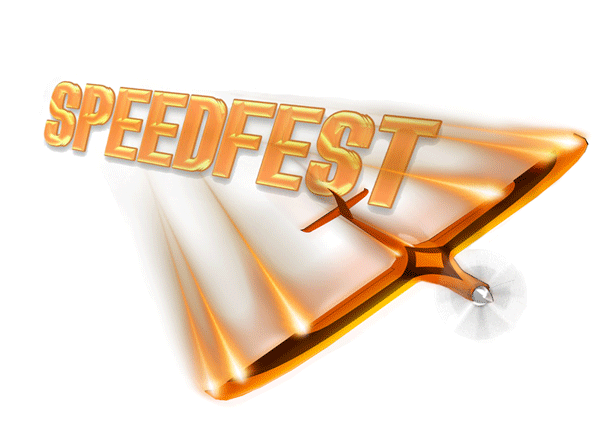

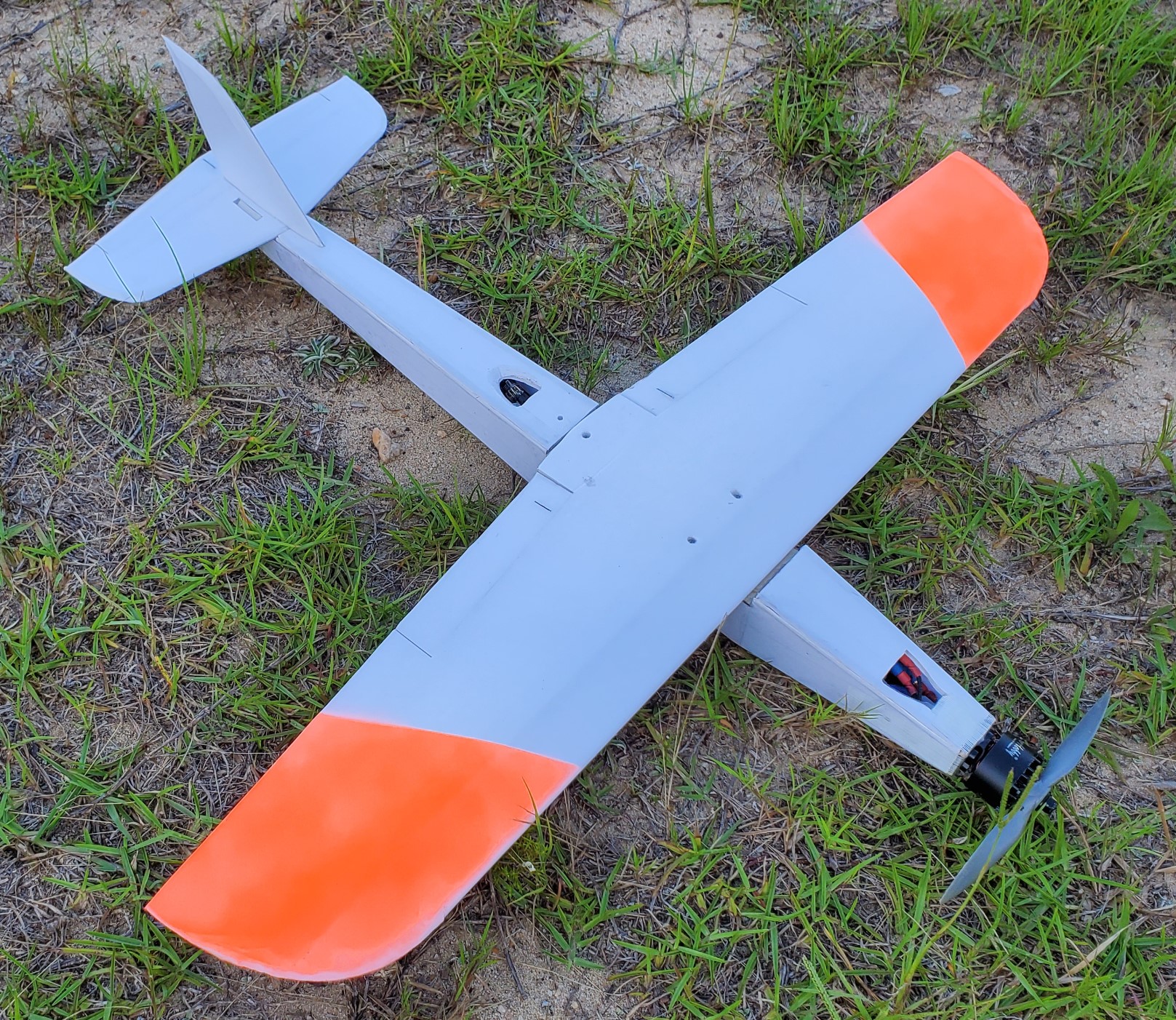
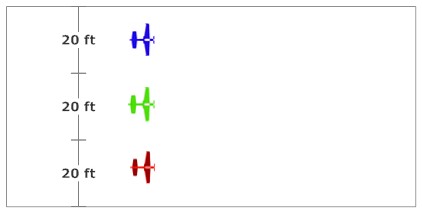
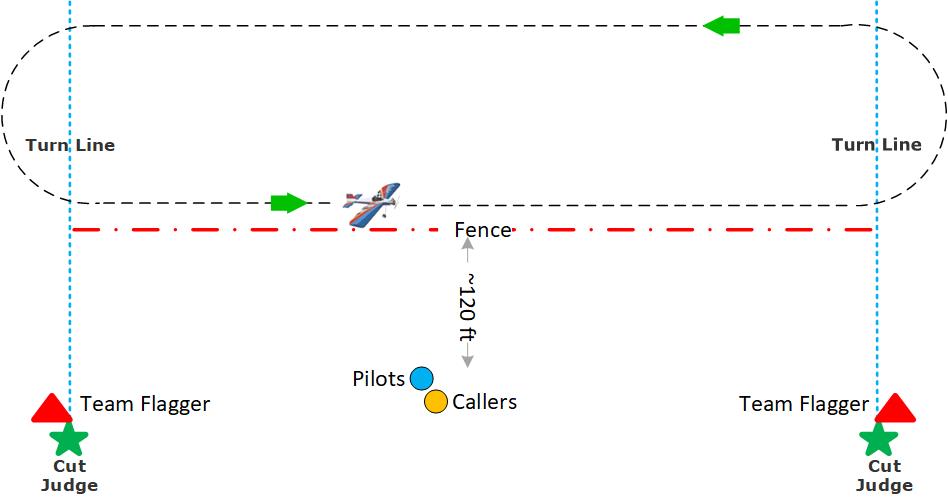


 ) no later than 7pm CST Monday of Speedfest week,
and the winner will be
chosen by "Likes". There are no restrictions on who
may
vote. Votes will be accumulated from until
Speedfest contest day. The penalty
for a team not submitting the link to their video by the deadline, is
loss of their best heat score on contest day.
) no later than 7pm CST Monday of Speedfest week,
and the winner will be
chosen by "Likes". There are no restrictions on who
may
vote. Votes will be accumulated from until
Speedfest contest day. The penalty
for a team not submitting the link to their video by the deadline, is
loss of their best heat score on contest day.